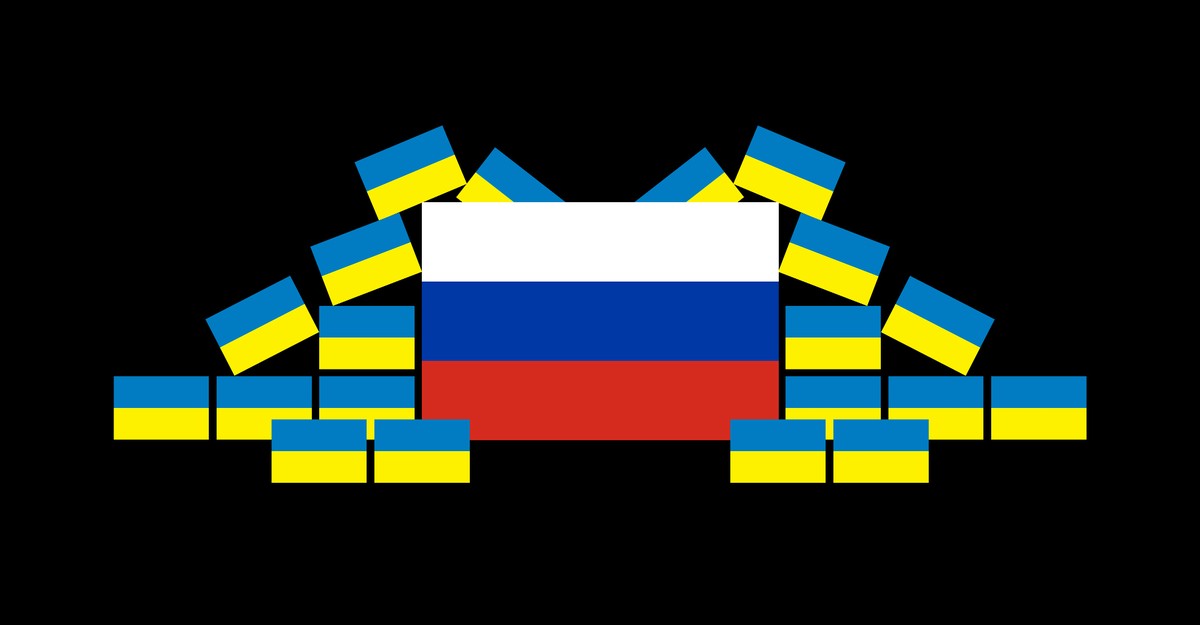Earlier this week, reports began filtering in that Ukrainian forces had entered Russia’s Kursk province, in what many analysts assumed was a small cross-border raid—of a sort that Ukraine has attempted a few times since Russia’s full-scale invasion in 2022. But as the hours and days ticked by and Ukrainian forces moved deeper and deeper into Russian territory, […] and had soon seized more ground from Russia in a few days than Russia has taken during an offensive in the Kharkiv region that began in the spring. As part of the new incursion, Ukraine has been deploying advanced armored vehicles, including German-supplied Marder infantry fighting vehicles—a striking development, given the unease among Kyiv’s allies about being seen as escalating hostilities between the West and Russia.
The initial success of what’s looking more and more like a full offensive shows what the Ukrainians can achieve if they have both the tools and the latitude to fight Russia. Ukraine’s most generous benefactors, especially the United States and Germany, have previously expressed their strong opposition to the use of their arms on Russian soil. […]
Now Washington and Berlin may be softening their positions more than they’re explicitly saying. A Pentagon spokesperson said Thursday that U.S. officials still “don’t support long-range attacks into Russia” but also that the Kursk incursion is “consistent with our policy.” Perhaps President Joe Biden, freed of electoral considerations, can focus more on how best to help the Ukrainians now—and limit the damage that Donald Trump could do to their cause if he wins in November. The White House’s notably bland statement on the Ukrainian offensive on Wednesday was hardly the sign of an administration in panic.
[…]
Throughout this war, widespread electronic surveillance by both sides has frequently tipped each off about the other’s plans. But in recent weeks, Kyiv built up the necessary forces so stealthily that the Russians had no idea what was going to hit them. The Ukrainians apparently carefully arranged for drones and computer hackers to suppress Russian resistance once their soldiers crossed the border. In three days, they came close to seizing the Russian city of Sudzha, through which runs a key rail line close to the Ukrainian border.
[…]
Notably, the U.S. and German governments have not publicly opposed any of this. Perhaps the two allies are no longer as nervous about cross-border operations as they were. Maybe the U.S. has finally come to understand that if Ukraine really is going to have a chance to win, it must be allowed to fight the war properly.
The real answer, of course, is that no one outside the Ukrainian government really knows what is happening—and, so far, Kyiv has been extremely tight-lipped on this operation. Having kept it quiet before it started, the last thing the Ukrainians want to do is let Russia know their intention. Whatever happens, the Kursk offensive has been a well-executed operation to this point. It’s their plan. Let them see to it.



Russia hasn’t been able to establish air dominance for 4 years, they advance at a snails pace, fighting for every 100m of land against swarms of drones decimating their troops, while Ukraine has been conceding each 100m of land by losing drones with as few people as possible.
Now Ukraine has invaded Russia, taken over a GazProm control station, and gained control of a rail line that Russia used to supply its troops on the front. For how long will they be able to advance those 100m by 100m, without supplies?
Ukraine now also has some F16s they can use to tip the scales in air dominance.
A month or so ago, Ukraine announced plans to produce at least one million drones by end of year. That’s a thousand drones for each Km of the Russian front, or one drone per meter, organized in swarms and waves with “mothership” control drones. It’s a strategy with no historical precedent, that Russia has no clue how to respond to… or at least has been highly ineffective in responding to.
Peace talks right now are being proposed by Russia, which usually means they’re in a weaker position and they know it. They’re running out of money, to the point that they want to crack down on the rampant corruption that held the whole system together. If they really do, then all bets are off on which general will be the first one to propose sticking Putin’s head on a spike.
I don’t know that I agree about air dominance. Ukraine has been bombarded by glide bombs, and Russia is getting a lot of value out of artillery and air support to soften positions before rolling in their conscripts.
I’m not saying that invading or counterattacking is definitely a mistake. I’m worried that those troops would be better utilized at the front. Either way we will see how this plays out as Russia repositions troops over the next week or so. Hopefully Ukraine can hold the line and keep from getting encircled
Air dominance means being able to fly anywhere anytime, without having to worry too much about the enemy. It meant ground troops didn’t need to worry about random bombs falling on them from the sky.
Right now, neither Russia or Ukraine have achieved that… which is kind of crazy; at the beginning of the “special operation”, everyone assumed that Russia would control the skies from day 1. And yet, Ukrainian jets and drones keep flying around, slowing Russia’s progress on the front to a crawl.
We will indeed see how things evolve, but Russia faces a problem now: if they pull troops from the front, which they’re barely holding, it can mean the difference between crawling forward, and crawling backwards.